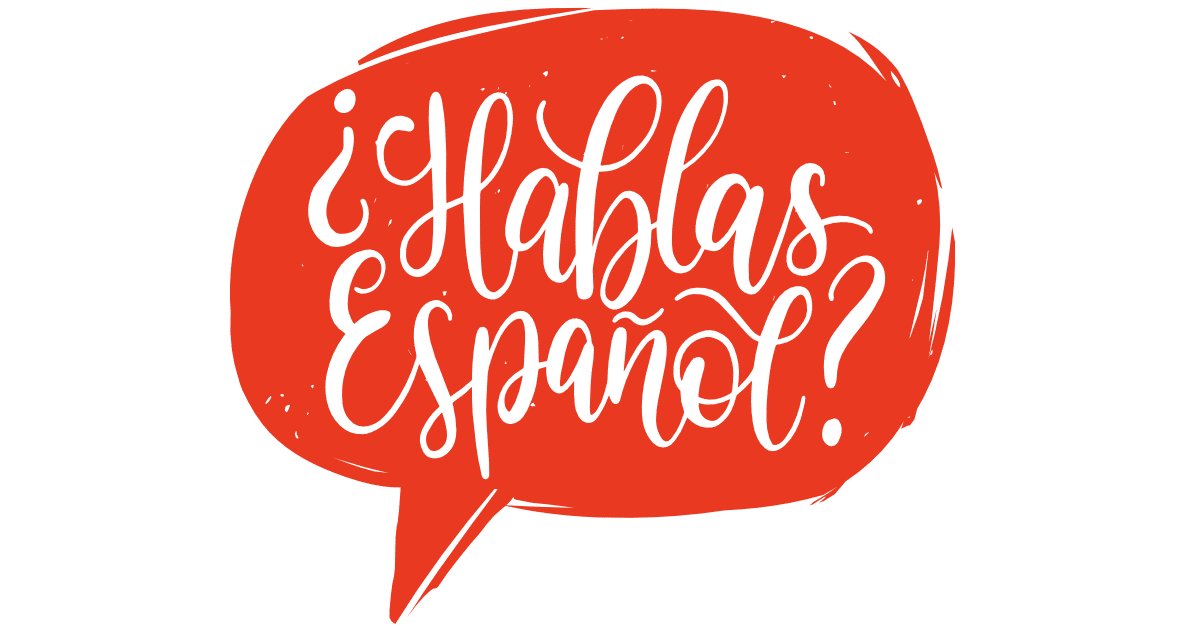The first question everybody asks when thinking about learning a new language is: “How long is it going to take me to learn Spanish? Or English? Or Chinese?” There are so many answers to this question. Everyone learns at a different pace. Secondly, there are different levels when learning a language. Thirdly, factors such as your age can influence how long it takes to learn Spanish.
Even when you’ve spent years learning a language, you never really learn everything about the language. Even native speakers of a language never learn everything about a language.
I’ve been studying Spanish for years. I Did five years in high school, two years in college, and decades later, I am still learning Spanish. Truly learning any language involves speaking, listening, reading, and writing the language, constantly.
A breakdown in any one skill is a breakdown in the skill set. I confess, that’s what happened to me. I wasn’t speaking the language, because I didn’t have a Spanish speaker to speak with. And that’s very important. So, the short answer to that question, how long does it take to learn Spanish is, “All your life!”
However, if you’re asking the question, then I bet that’s not the answer you’re looking for. I bet you’re looking for an answer like, six months. Or three months, maybe even a year or two, right? Well, I can give you those answers too, and I will.
But with a caveat.
You can learn Spanish in three months. But here’s what you’ll get.
- Sleepless nights as you watch videos, movies and listen to podcasts in an effort to hone your listening skills.
- Limited vocabulary – after all, how many words can you really learn in three months.
- Hopefully, a speaking buddy – otherwise, you will not be able to speak Spanish in three months. It is a given; immersion is one of the best ways to learn a language.
- How much reading and writing you do is dependent on what method you choose to learn Spanish. If you are doing the typical Spanish course, you may be able to read children’s books with 2-3 words on a page, but you may have a problem understanding the Spanish newspaper.
And you can learn Spanish in six months, but here’s how.
24/7 use of Spanish, meaning: reading only in Spanish, watching TV in Spanish, writing only in Spanish, and speaking with Spanish-speaking persons. 24/7!
This is why persons who choose to live in Spanish-speaking countries are able to speak Spanish after six months.
You could even learn in a year or two, which is more realistic. Here’s how.
- Make friends online with Spanish speakers, and speak daily for at least 10 minutes.
- If you watch sports, do it in Spanish. The same goes for any favorite pastime you have.
- Practice every day–reading, writing, speaking, and listening to Spanish.
- Note, depending on where your Spanish buddy is from, you will more than likely start speaking with that accent. So decide which accent you would prefer. Mexican accents are different from a Dominican accent, for example.
- Periodically, measure your progress and assess (every three months or so) if your plans are working. If not, you may need to try something new.
However, if you wish to be fluent in Spanish, i.e speak like a native, and still have a life where you can enjoy quality time with friends and family, then it will take much longer than three months to two years, and like I said earlier, maybe all your life.
Having said all that, you could immerse yourself in a culture (e.g. 6 months in Spain) and learn the language in much less time (i.e speaking fluently like a native). Going this route is good for you to speak naturally, learn idioms, and develop a real-life vocabulary, but you may need to take classes to improve your grammar.
What the “Experts” Say
The reality, however, is this, the average person who wants to learn Spanish is really looking for conversational fluency–not native fluency. That is, they want the ability to visit a Spanish-speaking country and be able to communicate with everyone they meet.
Or, using Spanish at the workplace, or just being able to communicate with new neighbors from El Salvador. Frankly, each scenario presented requires a different level of Spanish.
According to best-selling author and podcaster, Tim Ferris, “To understand 95% of a language and become conversationally fluent may require months of applied learning; to reach the 98% threshold could require 10 years.”
Many people will read this and be intimidated by it. Who has that kind of time? Especially if your work contract is only five years.
According to an FSI study, i.e. the Foreign Service Institute, it should take a new learner approximately 600 classroom hours to achieve conversational fluency in Spanish. They also suggest an approximate 1:1 ratio between the time spent independently studying Spanish and the time spent in a classroom.
That means the actual time would be approximately 1200 hours. At 3 hours a week (the typical number of hours spent in a Spanish class), it will take approximately 4 years to learn Spanish – conversational Spanish that is. Check out this visual of the CEFR language levels for an idea of what to expect.
FluentU has an article of the same title, which I find quite informative, and one that gives additional information concerning the length of time it will take to learn Spanish. When you’re finished reading this article, you can visit them for another perspective.
What TruFluency Says
If your plan is to learn Spanish for the workplace, then TruFluency has online tutors that can meet your need. Becoming fluent in Spanish for business doesn’t happen after only a lesson or two. It takes consistent, steady work.
TruFluency has lots of options for building your workforce’s Spanish skills to enable you to learn Spanish in as short a time as possible. A lot depends on you. One of the most effective methods that consistently gets the best results is The Bellieu Method.
With this method, participants do not hear lectures, but rather are encouraged to practice the language as much as possible in lessons, allowing them to learn in a comfortable setting with structured goals.
So how long does it take to learn Spanish?
So while I cannot give you a definitive answer as to how long it takes to learn Spanish, I can tell you, if you really wish to learn Spanish, are fairly young, have the time to invest in learning (and this is super important), and implement the SMART goals, it should not take as long as Tim Ferris suggests, or even as long as the FSI study.
A SMART goal is Specific, Measurable, Attainable, Relevant, and Timely.
At the end of the day, how long does it take to learn Spanish? It is all up to you. Do you agree? What has your experience been learning Spanish?





